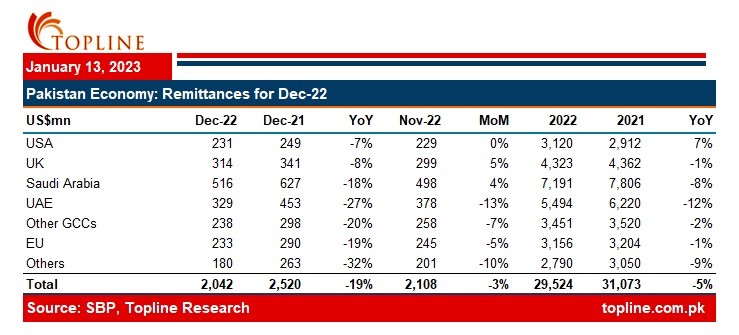Pakistan's Worker Remittances Witness an 11.3% YoY Decline
Worker remittances have seen an 11.3% year-on-year decline, according to the State Bank of Pakistan (SBP). However, on a month-on-month basis, remittances have increased by 5.34%, reaching $2.21 billion.

In a recent twist of events, Pakistan's worker remittances have undergone a roller-coaster ride, revealing both challenges and positive changes. Buckle up as we dive into the latest data from the State Bank of Pakistan (SBP) and explore the factors behind these fluctuations.

The latest data from the SBP brings good news for Pakistan, as remittances saw a 5.34% increase on a month-on-month basis. In September, they reached a total of $2.21 billion, a welcome rise from the previous month's $2.09 billion. What's causing this surge, you ask? Let's find out.
Factors Behind the Rise:
This uptick is attributed to several factors, including enhanced transparency and rigorous measures against dollar smuggling. These actions have created a more secure and regulated environment for remittance transactions. The move to a safer and transparent system benefits both senders and recipients alike.
Year-on-Year Decline:
However, the year-on-year data tells a different story, with an 11.3% decline in worker remittances for September when compared to the same month the previous year. This drop underlines the challenges faced by the Pakistani diaspora and reveals how the economic landscape is evolving.

Leading Source Countries:
Despite these fluctuations, remittances continue to pour into Pakistan from key source countries. Saudi Arabia tops the list, contributing $538.16 million, followed by the UAE with $399.77 million, the U.K. with $311.06 million, EU countries with $269.25 million, and the USA with $263.42 million. These countries remain pivotal in supporting Pakistan's economy through remittance inflows.
Year-over-Year Comparison:
When we look at cumulative figures for the first three months of the fiscal year 2023-24 (3MFY24), Pakistan received $6.33 billion in remittances. It's a substantial sum, but it represents a 19.85% decrease compared to the same period in the previous fiscal year (3MFY23). This underscores the ongoing challenges and fluctuations in remittance trends.
Exchange Rate Disparity:
The drop in remittances during the previous month was primarily due to a growing gap between official and unofficial exchange rates. Non-resident Pakistanis turned to unofficial channels offering better rates, leading to this decline.
Reforming for Resilience:
To tackle these challenges, Pakistani authorities, led by the army, initiated crackdowns against speculators, hoarders, and smugglers, aiming to curb illegal dollar outflows. This crackdown has led to a stronger Pakistani Rupee (PKR) against the U.S. Dollar (USD) in the official market.
Strengthening Regulation:
Moreover, the State Bank of Pakistan (SBP) introduced reforms to consolidate and transform various exchange companies, creating a single category with stricter regulations and higher capital requirements. These changes are boosting transparency within the remittance industry and strengthening regulatory oversight. As part of these measures, SBP suspended the authorization of four exchange companies in September, underscoring the central bank's commitment to enforcing regulatory standards and ensuring the security of remittance transactions.
In the ever-evolving landscape of remittances, Pakistan is navigating its way through challenges with reforms and policies that aim to create a more transparent and secure environment for both senders and recipients. These changes, combined with the support from key source countries, paint a hopeful picture for the future of Pakistan's remittance inflows.








